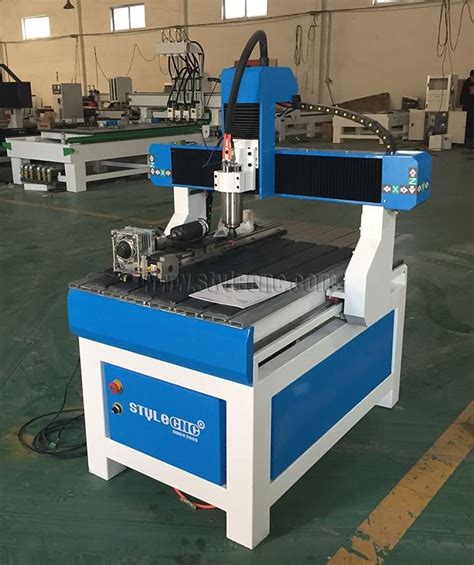4 axis cnc machining Here is a guide to 4 axis CNC machining: its types, functions, anatomy, pros and cons, and difference between 3- and 5-axis CNC machining. Levven Controls CSDW Decorator-style wireless switches are finished with standard decorator wall plates. The switch attaches to any surface; no holes, no switch boxes, and no wire. EASY SWITCH INSTALLATION – Add switches without cutting holes in the wall or pulling new wire.
0 · hobby 4 axis cnc machine
1 · cnc 4th axis rotary
2 · best 4 axis cnc machines
3 · 4th axis for cnc mill
4 · 4 axis hobby cnc
5 · 4 axis cnc woodworking machines
6 · 4 axis cnc mill cost
7 · 4 axis cnc machine price
For MIG welding sheet metal, it is often recommended to use an electrode wire of the smallest diameter to prevent burn-through and warping. The main reason to use a smaller diameter wire is that it takes less heat for melting and hence the metal around the .Welding sheet metal with a wire feed welder involves preparation, precision, and proper technique to achieve strong, clean welds. From selecting the right equipment to finishing the weld, each step plays a crucial role in the process.
4-Axis CNC machining involves multi-axis machining of workpiece material with CNC machines with an extra rotary axis. The 4-axis machining process utilizes any CNC machine that can simultaneously move at four .

In this complete guide to 4 Axis CNC Machining, you’ll learn when to use one, how they work, 4 Axis CNC workholding, Programming, and 4 Axis for CNC Routers.
In this article, we will explore the basics of 4-axis CNC machining, including its operation, benefits, and applications in various industries, as well as its comparison to other machining methods and tips for choosing 4-axis milling.
4-Axis CNC machining involves multi-axis machining of workpiece material with CNC machines with an extra rotary axis. The 4-axis machining process utilizes any CNC machine that can simultaneously move at four different angles.
Here is a guide to 4 axis CNC machining: its types, functions, anatomy, pros and cons, and difference between 3- and 5-axis CNC machining.
4-Axis CNC machining is a revolutionary technology that has transformed the manufacturing industry. It involves using computer numerical control (CNC) machines to perform complex machining operations on a workpiece accurately and efficiently.4-axis machining refers to a type of CNC (Computer Numerical Control) machining where a workpiece is processed through four different axes simultaneously. This method not only provides high precision and efficiency but also enables the creation of complex shapes and geometries. 4-Axis machining, commonly known as 4-axis CNC machining, is a multi-axis machining process that utilizes CNC machines equipped with an additional rotary axis. This process involves a CNC machine that moves in four different axes simultaneously. In a 4-axis CNC machine, the spindle travels along three axes: up and down, side to side, and back and forth, while the workpiece remains stationary on the machine table. The 4-axis CNC machining further rotates along the X-axis, also known as the A-axis.
This blog-post covers what 4 axis CNC machining is, its key benefits, differences between 3, 4 and 5 axis CNC machining, and ideal uses for 4 axis machining. What is 4 Axis CNC Machining? axis CNC machining utilizes Computer Numerical Control . Adding that 4th axis allows you to machine complex parts and reduce your operations. Take a look at how these experienced machinists use that extra axis to a. In this complete guide to 4 Axis CNC Machining, you’ll learn when to use one, how they work, 4 Axis CNC workholding, Programming, and 4 Axis for CNC Routers.
In this article, we will explore the basics of 4-axis CNC machining, including its operation, benefits, and applications in various industries, as well as its comparison to other machining methods and tips for choosing 4-axis milling. 4-Axis CNC machining involves multi-axis machining of workpiece material with CNC machines with an extra rotary axis. The 4-axis machining process utilizes any CNC machine that can simultaneously move at four different angles.Here is a guide to 4 axis CNC machining: its types, functions, anatomy, pros and cons, and difference between 3- and 5-axis CNC machining.4-Axis CNC machining is a revolutionary technology that has transformed the manufacturing industry. It involves using computer numerical control (CNC) machines to perform complex machining operations on a workpiece accurately and efficiently.
4-axis machining refers to a type of CNC (Computer Numerical Control) machining where a workpiece is processed through four different axes simultaneously. This method not only provides high precision and efficiency but also enables the creation of complex shapes and geometries.
sheet metal drive cleat bender
4-Axis machining, commonly known as 4-axis CNC machining, is a multi-axis machining process that utilizes CNC machines equipped with an additional rotary axis. This process involves a CNC machine that moves in four different axes simultaneously.
In a 4-axis CNC machine, the spindle travels along three axes: up and down, side to side, and back and forth, while the workpiece remains stationary on the machine table. The 4-axis CNC machining further rotates along the X-axis, also known as the A-axis. This blog-post covers what 4 axis CNC machining is, its key benefits, differences between 3, 4 and 5 axis CNC machining, and ideal uses for 4 axis machining. What is 4 Axis CNC Machining? axis CNC machining utilizes Computer Numerical Control .
hobby 4 axis cnc machine
cnc 4th axis rotary
best 4 axis cnc machines
These terminal strips differ from what we see in the US by coming in long "blocks"; you break off and use as many ports as you need. There are (noninsulated) "combs" that you use to jumper adjacent ports together.
4 axis cnc machining|hobby 4 axis cnc machine